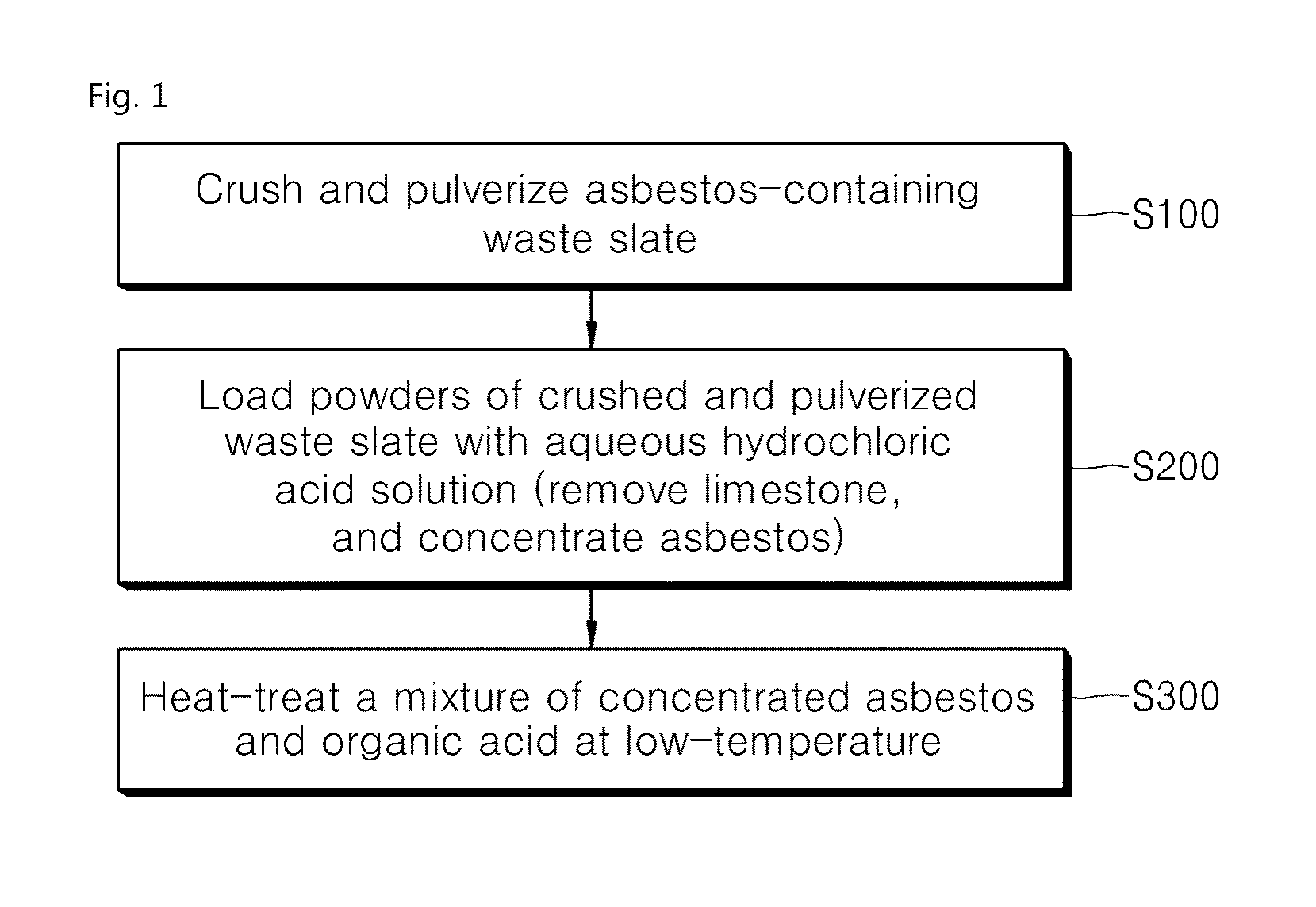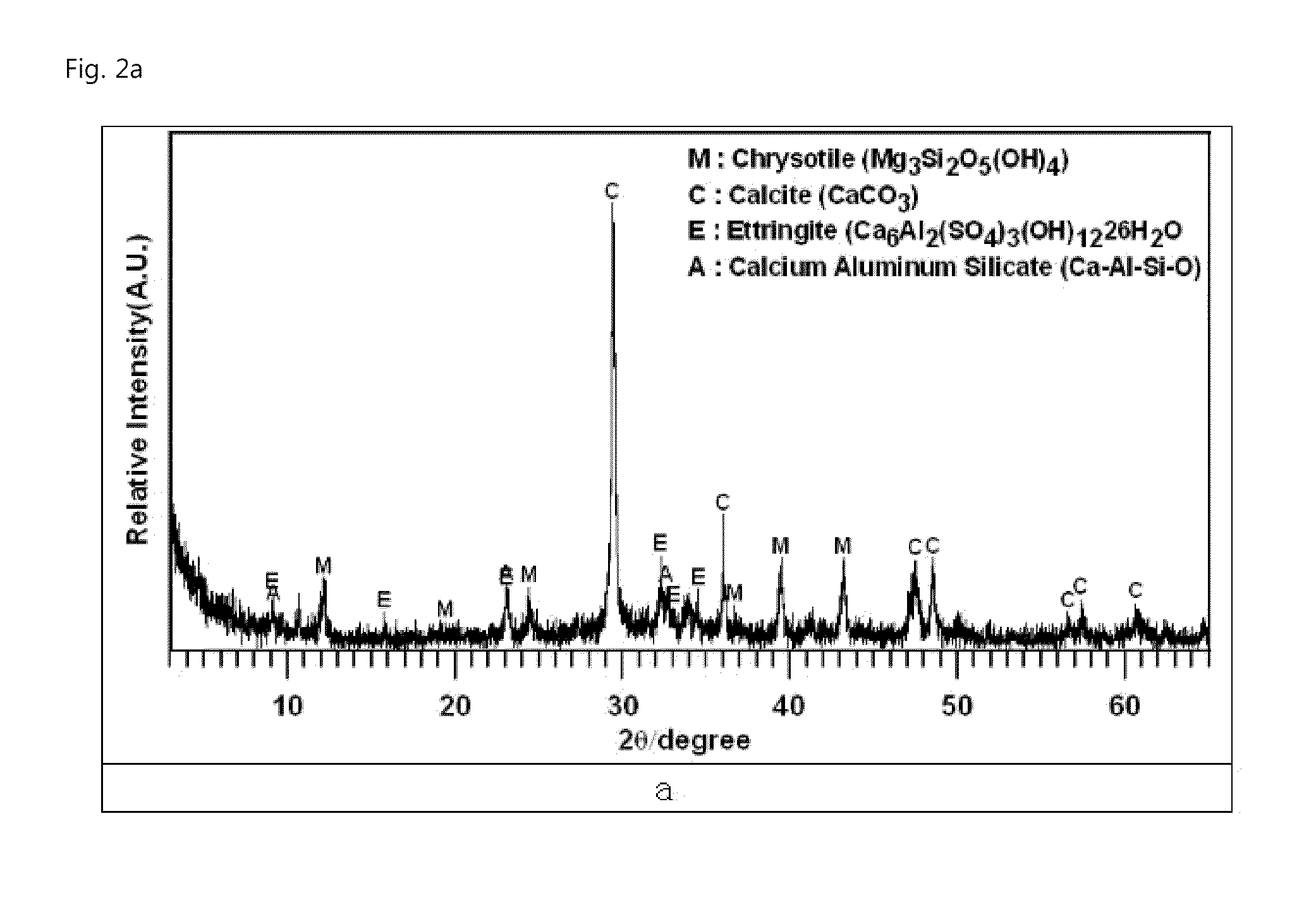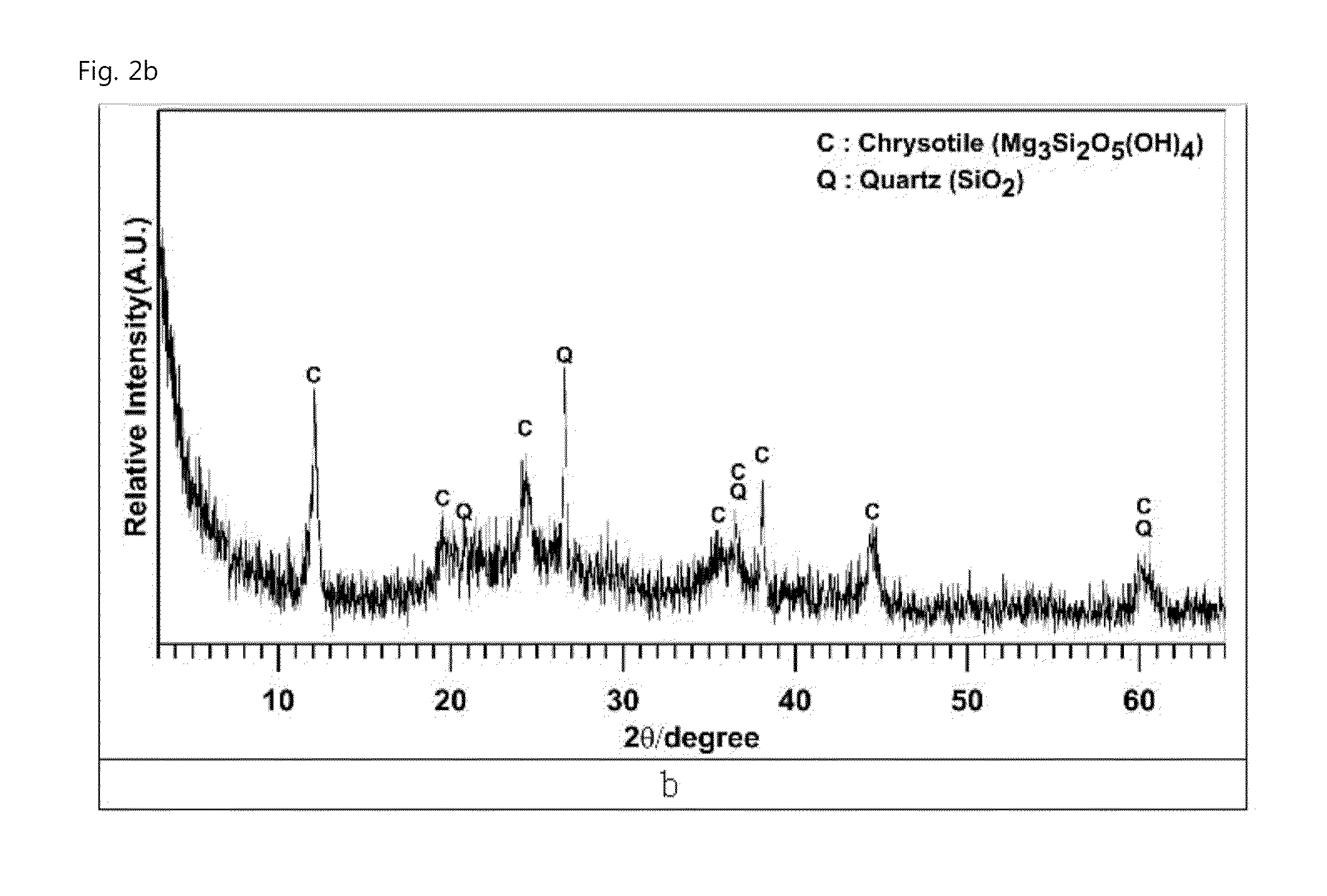Method of detoxifying asbestos contained in waste slate and detoxified asbestos obtained through the same
a technology of asbestos and waste slate, which is applied in the direction of solid waste disposal, chemistry apparatus and processes, transportation and packaging, etc., can solve the problems of high cost, asbestos is fatal to the human body, and the treatment and movement of all materials containing asbestos of 1% or more have been illegal, so as to achieve the effect of preventing environmental pollution
- Summary
- Abstract
- Description
- Claims
- Application Information
AI Technical Summary
Benefits of technology
Problems solved by technology
Method used
Image
Examples
embodiment
[0071]The waste slate powder of 5 g and the 5% hydrochloric acid aqueous solution of 42 cc were allowed to react with each other for one hour while CO2 was slowly generated. After the reaction, the pH was 2.5.
[0072]Then, the solids and liquid were separated from each other using a centrifugal separator to recover the solids, and then, the recovered solids were dried in a dryer for about 24 hours at 90° C.
[0073]Next, the phases of the solids were analyzed by an X-ray diffraction (XRD) and a scanning electron microscope (SEM), so that only chrysotile (Mg3Si2O5(OH)4) and SiO2 were found (see FIGS. 2a, 2b and 2c).
[0074]In this case, the weight of the recovered solids was 1.54 g which is 30% based on the initial material. According to the calculation result based on the chemical analyzing result, the chrysotile was about 60% based on the entire solids, that is, 0.9 g, and SiO2 was about 40%, that is, 0.6 g. After, the recovered solids of 1.54 g and the 10% oxalic acid (C2H2O4.2H2O) aqueo...
modified example
[0094]The waste slate powder of 5 g and the 5% hydrochloric acid aqueous solution of 40 cc were allowed to react with each other for one hour while CO2 was slowly generated. After the reaction, the pH was 2.2.
[0095]Then, the solids and liquid were separated from each other using a centrifugal separator to recover the solids, and then, the recovered solids were dried in a dryer for about 24 hours at 90° C. In this case, the recovered solids were 4.9 g.
[0096]Next, the phases of the solids were analyzed by an X-ray diffraction (XRD) and a scanning electron microscope (SEM), so that chrysotile (Mg3Si2O5(OH)4), SiO2 and a great quantity of gypsum (CaCO3) were found.
[0097]However, since the gypsum and the chrysotile may not be separately reacted with oxalic acid, it should be understood that it is meaningless to detoxify the waste slate with the sulfuric acid.
[0098]The following Table 1 shows the quantity (g) of the waste slate powder, the quantity (cc) of hydro...
PUM
| Property | Measurement | Unit |
|---|---|---|
| temperature | aaaaa | aaaaa |
| temperature | aaaaa | aaaaa |
| size | aaaaa | aaaaa |
Abstract
Description
Claims
Application Information
 Login to View More
Login to View More - R&D
- Intellectual Property
- Life Sciences
- Materials
- Tech Scout
- Unparalleled Data Quality
- Higher Quality Content
- 60% Fewer Hallucinations
Browse by: Latest US Patents, China's latest patents, Technical Efficacy Thesaurus, Application Domain, Technology Topic, Popular Technical Reports.
© 2025 PatSnap. All rights reserved.Legal|Privacy policy|Modern Slavery Act Transparency Statement|Sitemap|About US| Contact US: help@patsnap.com



